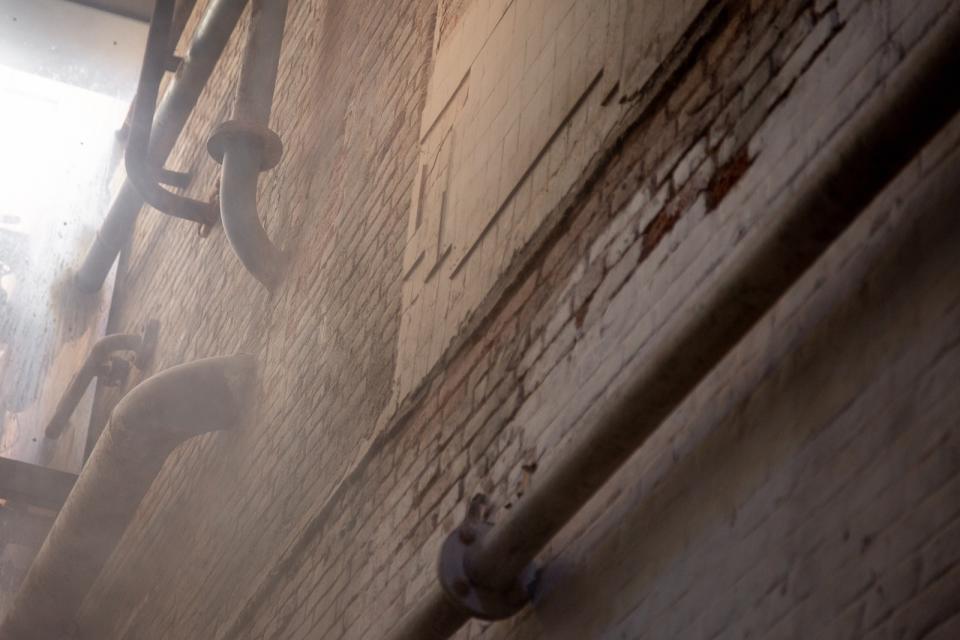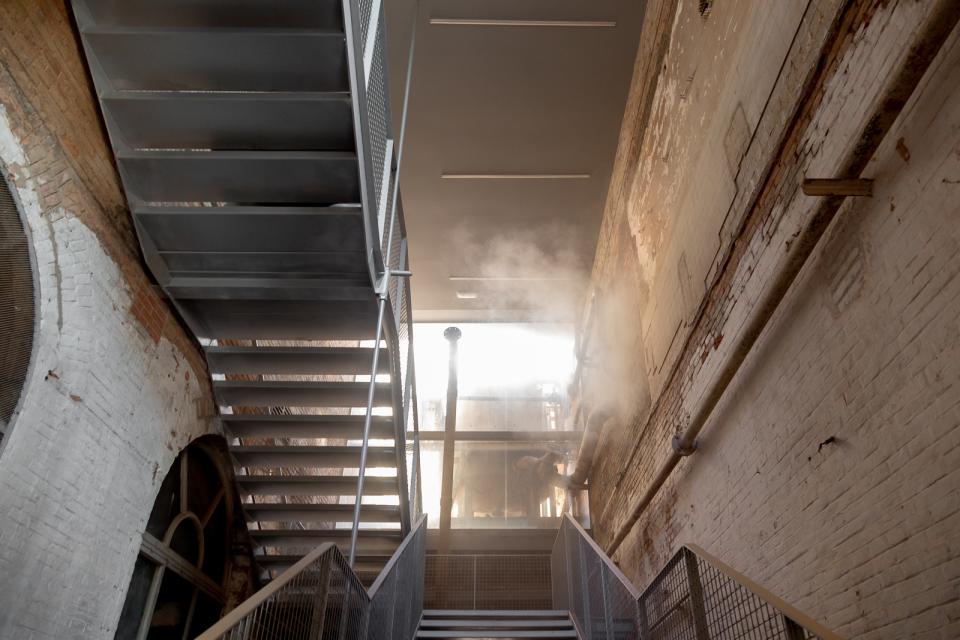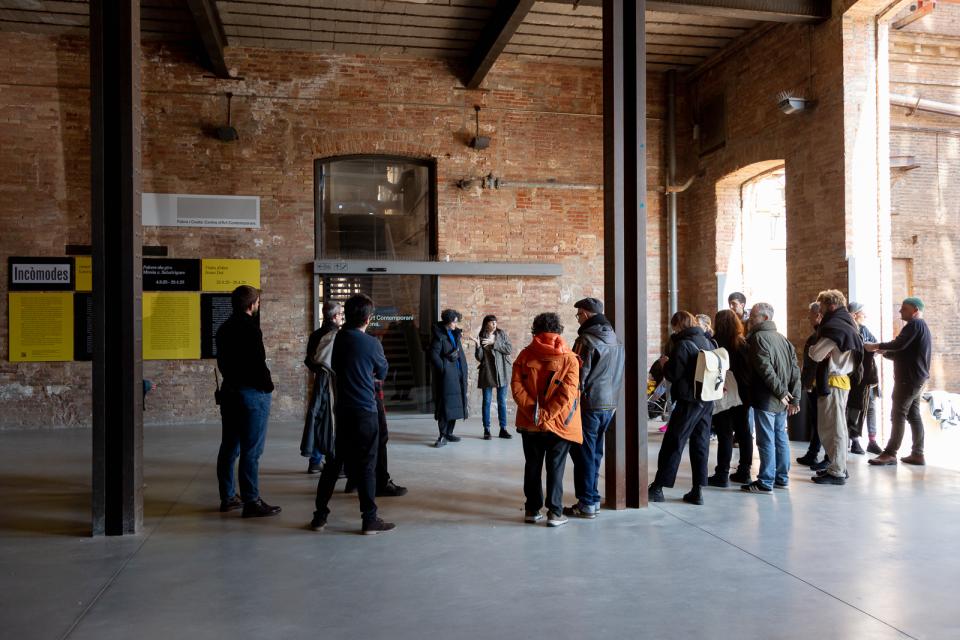'Polvere che gira', by Mireia c. Saladrigues
For some time now, Mireia c. Saladrigues has researched dust as an elementary material and its memory in the form of particles. Specifically, since 2017, when she began her project Martrellata_14.09.91, a chrono-material reflection on one of the most paradigmatic acts of iconoclasm in the 20th century: the hammer blow to the toe of Michelangelo’s sculpture of David. During her research, the artist discovered that there weren’t enough fragments collected after the attack for the reconstruction of the piece because some bits had been pulverised. The scientific investigations that accompanied the restoration also revealed that the piece was in a very fragile physical state, in the phase prior to becoming what the Italians call a marmo zuccherino, which could be translated as ‘floury marble’. All the information that a tiny grain of rock can contain and the image of David turned into a screen of marble particles are at the origin of Polvere che gira (Swirling Dust), an installation of imperceptible clouds of dust.
For Uncomfortable, the artist will install this artwork on the entrance steps to the former Art Centre, so that the dust will slowly fall and cover the entrance. Whoever passes in front of the glass doors will see how the closed centre gradually becomes more and more dusty, metaphorically and literally. Without visitors, the dust will accumulate but it will also slip through all the cracks in the building, adding to the layers of history of the former factory’s boiler room that, underneath, we shared with MUHBA.
As David Santaeulària wrote at the first presentation of the work that took place at La Presó of M|A|C Mataró: “Each dust particle can be considered the crystallisation of a long process of continuous transformation that contains an exclusive path and memory. The dust swirls and its almost invisible size (formed by thousands of larger ones that we do not perceive with the naked eye) makes us part of this fascination to pick up and use the most minimal and intangible units: the graphene nanoparticle, the Higgs boson, ‘smart dust’...”
As ‘vibrant matter’, to use Jane Bennett's term, dust has life and the way Mireia c. Saladrigues makes it appear, move and stop is evidence of this. Moreover, seeing how a machine spits out a pinch of rock and how it flies away, one part perhaps swept away while the other settles, we inevitably wonder about the before and after of this moment. Suddenly, dust comes to life beyond the glass door, beyond the artist, who, in this way, invites us to consider the material reality beyond the human one
With the support of Fundació Sorigué and Hangar, Centre de producció i recerca d’arts visuals.
Acknowledgements: MUHBA.
------
Mireia c. Saladrigues (Terrassa, 1978) is an artist and researcher, or better said, an artist-researcher. She is an international PhD candidate (DFA) at the University of the Arts Helsinki with Behaving Unconventionally in Gallery Settings, which documents instances of human and non-human disruption in cultural practices, proposing an artistic and theoretical re-reading of nonconformity. Her work has been exhibited at solo and group shows in Europe, the United States and Asia and is part of the collections of the Fons Nacional de Catalunya, MACBA and the Culture Institute of Barcelona (ICUB), as well as of private collectors. She has obtained grants from the Finnish Cultural Foundation-Suomen Kulttuurirahasto (2022), the Arts Promotion Centre Finland-Taike (2021) and the City of Barcelona Prize (2021). Recently, she has been a resident at the Royal Academy of Spain in Rome (2021-2022).






